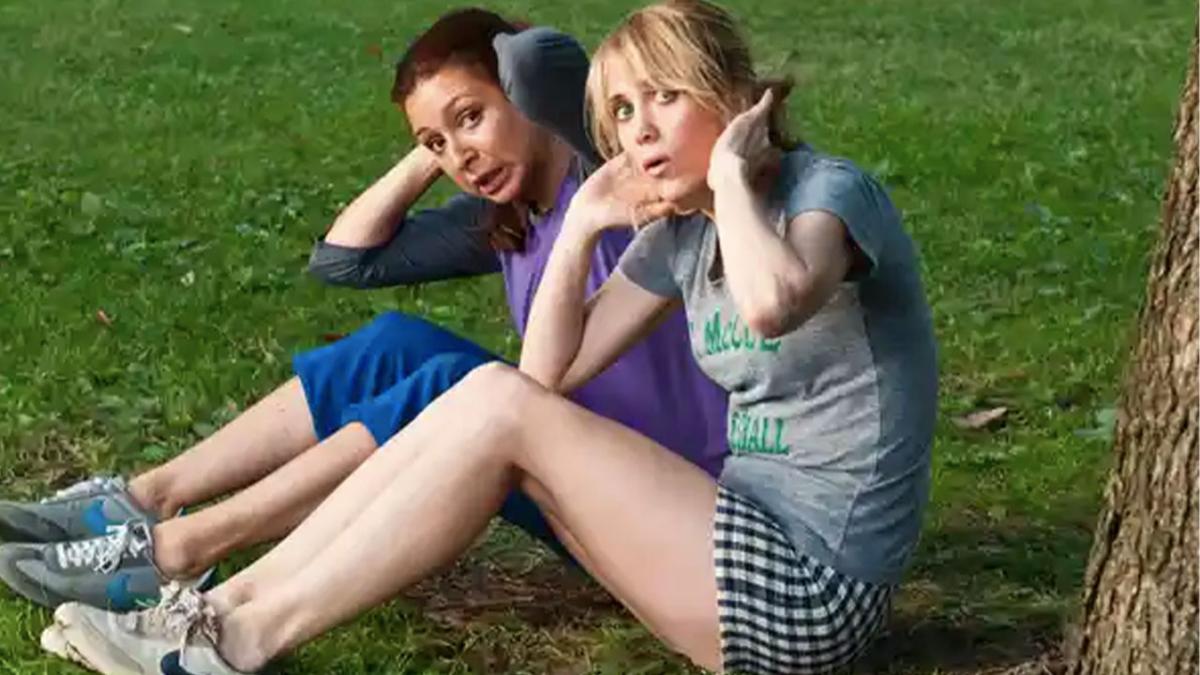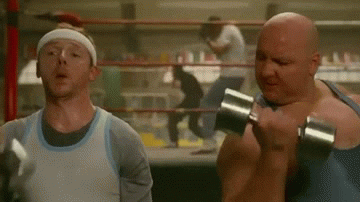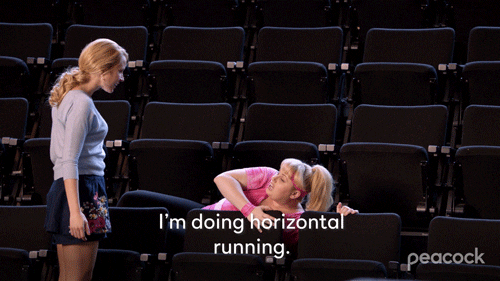
This year, I randomly decided I was going to run my first-ever half marathon (21.1kms) during the upcoming Nike Melbourne Marathon Festival. (Hahaha, how good are breakups?!). This honestly felt like a bit of a reach for me, considering there are almost two weeks out of every month where exercising is the last fucking thing I wanna do, thanks to my menstrual cycle. However, I’ve recently learnt that if you train in alignment with your menstrual cycle, you can change that.
Yep, as your body goes through various hormonal fluctuations throughout the 28 days (the average cycle), you should be shifting a few things in your routine to make the most of your energy levels.
How do I know this magic piece of information? Bc, I enlisted the help of Nike Run Coach and all-round legend Lydia O’Donnell, who explained to me how the different phases of our cycles impact your ability (and will) to exercise.
“By tracking your menstrual cycle and understanding the hormonal fluctuations that happen throughout the cycle, you are able to adapt your training/exercise to these fluctuations and make the most of your female physiology,” explains O’Donnell. By doing so, not only are you giving your body what it needs when it needs it, but you’re also building a more sustainable relationship between your body and exercise.
So first things first, what are the different stages of your menstrual cycle?
The Follicular phase

According to O’Donnell, you’ll likely feel the strongest and fittest during the follicular phase. It’s the first half of your menstrual cycle (day one is the first day of your period), and it goes from day one through to just after ovulation (which, for a textbook 28-day cycle, is around day 14).
“The follicular phase is dominated by oestrogen, and when the female sex hormone progesterone is at its lowest. Estrogen is anabolic, meaning it helps to build lean muscle and provides the body with the ability to store glycogen easier,” explains O’Donnell.
This means you’ll likely have more energy to burn, and your body will recover quicker and easier. During this phase of the month, you’ll feel like smashing all your exercise goals, so try to make the most of it.
What kind of exercise should you do during the follicular phase?
During the follicular phase, O’Donnell recommends hitting those more challenging workouts. “It’s a great time to push the body relatively hard. With the rise in oestrogen during ovulation, we tend to encourage higher-intensity workouts that allow you to push your heart rate high.”
So think HIIT workouts, F45, boxing, AMRAP bodyweight sessions, speed and insurance runs and other higher-intensity workouts.
If you are battling any lingering menstrual symptoms during the follicular phase, you can always opt for light activity in these first days to help alleviate cramps and improve period-related symptoms, explains O’Donnell.
The Ovulation phase

Next is the Ovulation Phase, which is the stage of your cycle where everything feels peachy and possible (not to mention horny). It usually takes place around days 12-15 and is when ovulation occurs, so your oestrogen levels peak and an egg is released. You also have a small peak in testosterone, explains O’Donnell, which means it’s a great time to build lean muscle and provide the body with the ability to store glycogen easily.
How should you exercise during the ovulation phase?
This phase is super beneficial for building strength, so if you’re someone who loves lifting weights, it’s your time to shine, babbbbbby. Focus on hitting those strength and conditioning exercises.
The Luteal phase

Ah, the Luteal Phase (my least favourite). The luteal phase can be one of the trickiest to exercise throughout, this is because it’s dominated by progesterone, which can make us feel a lot more shitty and run down than the other parts of our cycle. This is the part of your cycle where your premenstrual symptoms start to rear their crampy heads.
“Progesterone is catabolic, meaning it breaks down muscle vs building it up. Progesterone levels can vary up to six times between those who menstruate, and progesterone levels can impact how severe your premenstrual symptoms (PMS) can be,” explains O’Donnell.
How should you exercise during the luteal phase?
Given this part of the menstrual cycle where the PMS hits hardest, you’re likely to feel ZERO motivation to exercise, and that’s okay.
It’s particularly important that during the luteal phase, you focus more so on rest and recovery anyway, says O’Donnell. “As progesterone drops off, our energy levels may drop off too, and to get the most out of our body in the follicular phase, it is important to pull things back slightly in the luteal phase.”
This isn’t to say you can’t train but focus more on lower-intensity workouts like pilates, hot girl walks and yoga.
Personally, I think so many of us struggle with the rest and recovery part of our cycle instead of embracing it. We’re so accustom to the health and fitness grind that we stop listening to our bodies which can lead to over-exercising.
So does it actually work?
Since learning all this super handy information, I’ve been on a 12-week training program that aligns with my cycle to prep for the half mara. I can honestly say that the difference is nothing short of astounding.
By observing which stage of my menstrual cycle I’m in and picking workouts that align with that phase, I’ve noticed a massive shift in how my mind and body respond to workouts. I’m slowly learning that you don’t have to work out like an absolute demon daily to see increased overall fitness. In fact, I’d go as far as to say I’m leaner, more muscular and fitter now than I was 10 weeks ago. And I actually enjoy exercising during my luteal phase, where previously I’d take the human form of a potato for two weeks.
The Melbs half mara is less than two weeks away (you can still sign up here, if ya wanna join me) and I actually feel it’s humanly possible to do it, despite being in my luteal phase.
If you’re already someone who loves exercising, why not switch it up to align with your menstrual cycle and see if it makes a difference for you? Can’t hurt.







